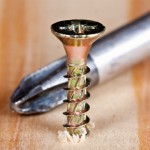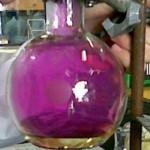Weekly Wrap Volume 57
 Who was Cunningham of Cunningham’s Law?
Who was Cunningham of Cunningham’s Law?
Cunningham’s Law is an internet adage that states “The best way to get the right answer on the Internet is not to ask a question, but to post the wrong answer.” It’s an interesting hypothesis for sure. And, if you’ve spent any time on the internet whatsoever, you’re likely well aware that posting something incorrect online is a sure-fire way to illicit a smarmy correction from a fellow internet denizen. (That’s not to mention the phenomenon of Grammar Nazis, or as I prefer, Grammar Nazi’s.) In fact, Today I Found Out wouldn’t exist if it wasn’t for our deep-seated desire to correct all of those little… (more)
 Where Do the Gypsies Originally Come From?
Where Do the Gypsies Originally Come From?
They do not have a shared homeland or national identity. They are a people who are scattered across the globe and whose origins have always been shrouded in myth and mystery (among other reasons because they have kept no written records of their early history). Many saw them (and continue to do so in many cases) as dirty, thieving and undesirable, others as artistic, romantic and carefree. In France, they are referred to as gitanes, in Spain they are called gitanos, and in Germany, zigeuner. There are an estimated 12 million Romani – better known as Gypsies – living worldwide. Most of them (8-10 million) live in Europe, making them the continent’s largest ethnic minority group. So where did they come from? A recent genetic analysis of 13… (more)
While the World Wide Web was initially invented by one person (see: What was the First Website?), the genesis of the internet itself was a group effort by numerous individuals, sometimes working in concert, and other times independently. Its birth takes us back to the extremely competitive technological contest between the US and the USSR during the Cold War. The Soviet Union sent the satellite Sputnik 1 into space on October 4, 1957. Partially in response, the American government created in 1958 the Advanced Research Project Agency, known today as DARPA… (more)
Iodine first began being added to salt commercially in the United States in 1924 by the Morton Salt Company at the request of the government. This was done as a response to the fact that there were certain regions in the U.S., such as around the Great Lakes and in the Pacific Northwest, where people weren’t getting enough iodine in their diets due to it not being prevalent in the soil in those regions. Among other problems, this caused many… (more)
 Why is Aluminum Foil Shiny on One Side But Not the Other?
Why is Aluminum Foil Shiny on One Side But Not the Other?
The most abundant metal in the Earth’s crust, aluminum naturally occurs as a compound with other elements, such as aluminum oxide or potassium aluminum sulfate. As such, it was not isolated as a separate element until 1825 when a Danish chemist, Hans Christian Oersted, was able to produce a small amount. By 1845, a German chemist, Friedrich Wöhler, had perfected a way of producing enough aluminum to be able to study it. In 1854, the French chemist, Henri Étienne Sainte-Claire Deville improved on Wöhler’s method and developed a process to commercially produce the… (more)
Bonus Quick Facts:
- Just three months after his death, Charlie Chaplin’s body was stolen on Christmas day in 1977, by two mechanics. They thought they could get money from his family in exchange for his body. However, the two grave robbers were captured eleven weeks later and Chaplin’s body was recovered. To stop this from happening again, Chaplin was buried under 6 feet of concrete the second time around.
- The Twitter Bird’s first name is Larry, as in Larry Bird. He’s named after the hall of fame Basketball player Larry Bird, who played for Biz Stone’s (the founder of Twitter) home team, the Boston Celtics.
- The name Montgomery Scott, for “Scotty” on Star Trek, was chosen because Montgomery was James Doohan’s middle name and the character was portrayed as Scottish. As for Doohan, he was Canadian. Doohan, who was a famed voice actor at the time, presented several different accents for the character to Gene Roddenberry, but ultimately convinced Roddenberry that the character should be Scottish because “… in my experience, all the world’s best engineers have been Scottish.”
- Harry Houdini died in Detroit, Michigan on Halloween in 1926. Contrary to popular belief, he didn’t die in a performance, but rather died of a ruptured appendix. Houdini had been suffering from appendicitis for several days when J. Gordon Whitehead decided to test Houdini’s claim that he could take any blow to the stomach. Whitehead didn’t give Houdini a chance to prepare himself and repeatedly punched him in the stomach area. This further worsened Houdini’s appendicitis, but he continued to refuse medical aid and continued to perform shows, even while holding a 104°F (40°C) temperature and passing out during one show, only to be revived and continue on. He died shortly after this from a ruptured appendix at 1:26 p.m. in Room 401 in Detroit’s Grace Hospital on October 31, 1926.
- LEDs are much more efficient than “regular” incandescent light bulbs due to the fact that they give off almost no heat; so a much higher percentage of the electricity used goes towards making light, rather than in incandescent bulbs where a good percentage of it ends up being converted to heat.
- It has long been suspected that Velociraptors had feathers, but the evidence proving this has only come very recently. That evidence came from a discovery in September of 2007 of a forelimb fossil of a Velociraptor that had quill knobs, similar to those found on birds.
- The scientific name for an ice cream headache is “sphenopalatine ganglioneuralgia”. This basically just means “nerve pain of the sphenopalatine ganglion”.
Other Interesting Stuff:
 Was There Really a General Tso?
Was There Really a General Tso?
Most of us know the name “General Tso” from the delicious and ubiquitous chicken dish available from Chinese restaurants across the United States. Yet, before Americans were introduced to tangy, spicy, saucy Chinese fried chicken, there was a powerful general and respected leader that helped run China. Born on November 10, 1812 in Wenjialong in Hunan province, early in life, Zuo Zongtang (Tso Tsung-t’ang in the Wade-Giles Romanization system) had hoped to become a civil servant. He studied Western culture, science and political economy, but he repeatedly failed the civil servant exam. At one point, he even considered pursuing… (more)
In Charles Dickens’ holiday classic, A Christmans Carol, the character of Tiny Tim dies in one timeline, but is saved by Ebenezer’s Scrooge’s charity in another. Although Dickens scholars have posited a range of maladies that can either cause death or be alleviated by throwing money at it, a recent study has led to the conclusion that he likely suffered from both tuberculosis (TB) and rickets, as you’ll soon see. The Story: In the well-loved Christmas tale (it has never been out-of-print since it was first published in 1843), the protagonist (so to speak) is Ebenezer Scrooge, the miserly boss of Bob Cratchit, who lives with his family in poverty while Scrooge enjoys an easy life. One member of the Cratchit family, Tiny Tim, struggles with a crutch and has iron bars on his legs, but the name of his illness is not given. As the story progresses, Scrooge is visited by four ghosts who show him the error of his miserly ways. During the last of these visitations, the Ghost of Christmas… (more)
 Why Are Pitchers’ Mounds Standard, But Baseball Ballparks Different Sizes?
Why Are Pitchers’ Mounds Standard, But Baseball Ballparks Different Sizes?
From Boston’s Green Monster, to San Francisco’s McCovey Cove and Houston’s absurd Tal’s Hill, Major League Ballparks can vary greatly in design and depth. Yet despite all of their differences, the distance between the pitcher’s mound and home plate is always the same. Here’s why. Pitcher’s Mound: Essentially, the distance between the mound and home plate is intended to strike a balance between hitters and pitchers, in order to keep the game exciting. In the earliest days of professional baseball, to prevent pitchers from having a running start (like in cricket), they drew a box from which they had to throw – and the front edge of the box was 45 feet from the plate. As pitchers (who threw underhanded)… (more)
 Why Do Screws Tighten Clockwise?
Why Do Screws Tighten Clockwise?
One of the six simple machines, a screw is nothing more than an inclined plane wrapped around a center pole. While today screws come in standard sizes, and typically are tightened by turning clockwise (and loosened by turning counterclockwise), this is a recent invention. A great example of how things that seem simple can be really hard to do right, the development of the predicable system we enjoy today took 2,000 years to invent. Archytas of Tarentum (428 BC – 350 BC), a friend of Plato, is believed to have invented the screw around 400 BC, while Archimedes (287 BC – 212 BC) was one of the first to realize the screw’s ability to fix things together, as well as to lift water. The Romans developed hand-cut screws and made them with bronze and silver. Early on, screws of all sizes were used… (more)
This Week’s Podcast Episodes:
- Podcast Episode #235: A Slave and the Freedom Statue
- Podcast Episode 236: A Tulip for a House
- Podcast Episode #237: Cliffs and Sweaty Palms
- Podcast Episode #238: Smelling Rain
- Podcast Episode #239: The Small Tweak That Saved Basketball
Quote of the Week:
- “Get your facts first, then you can distort them as you please.” -Mark Twain
| Share the Knowledge! |
|








Not only are raisins poisonous to dogs but to adults like myself! Both raisins and grapes burn my throat. Give me muscle cramps in my legs and cause them to swell up. I have just recently discovered water alone does NOT wash these poisons off grapes. If the manufacturers washed these poisons off the grapes properly before drying them into raisins this problem will be resolved but the big question remains.. Will they ? I’d hate to think what they would do to a small baby but do they care ? Honestly ? Really ? I wonder.. By the way I have come to many sites that have been taken down when I google to find info on poisonous grapes and raisins which leads me to believe Monsanto has it’s paid workers out there.
Soap and water will wash poisons off grapes followed by a good rub and rinse with baking soda but I wouldn’t recommend this with raisins and would just leave them off my plate. Hope this helps!